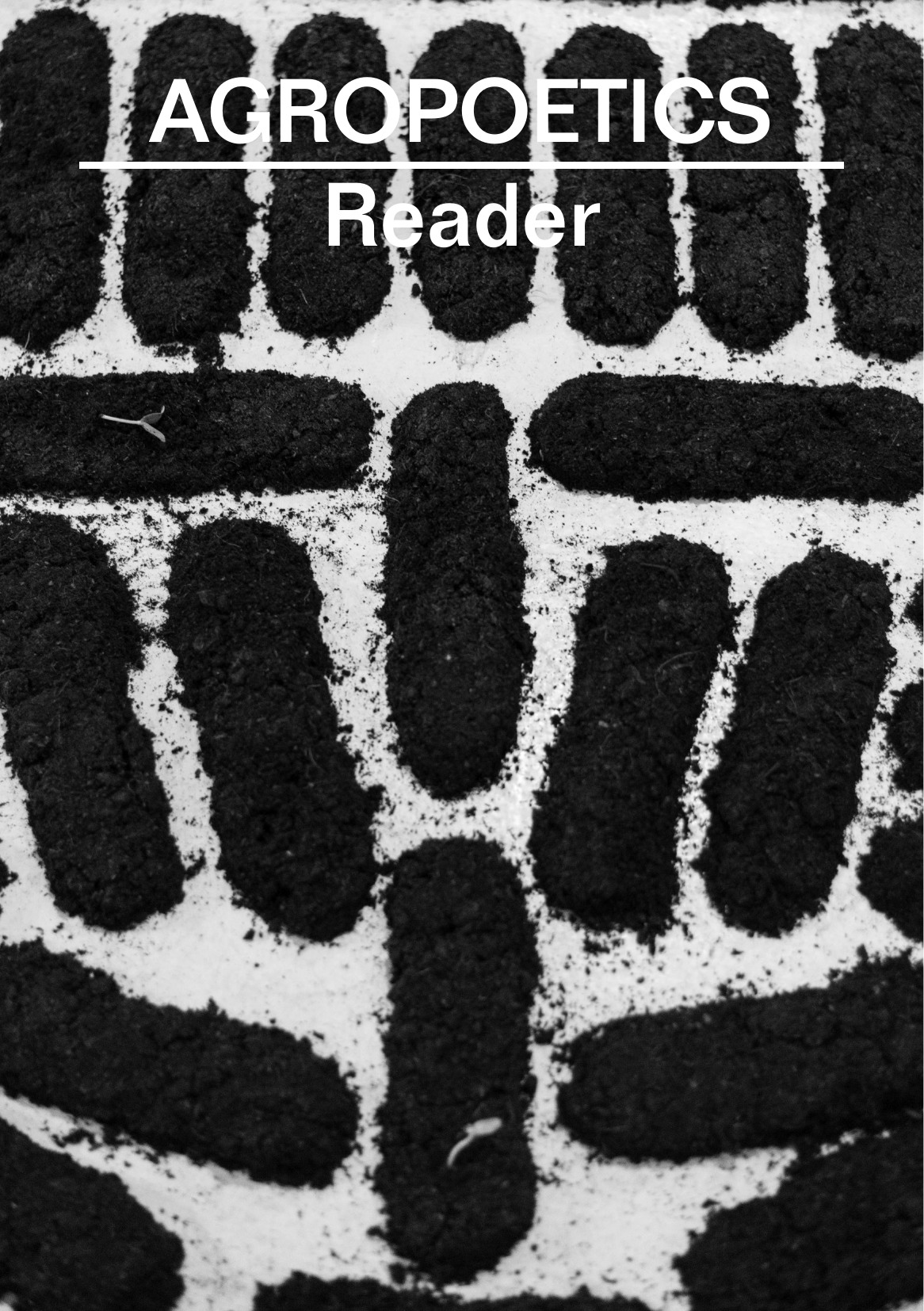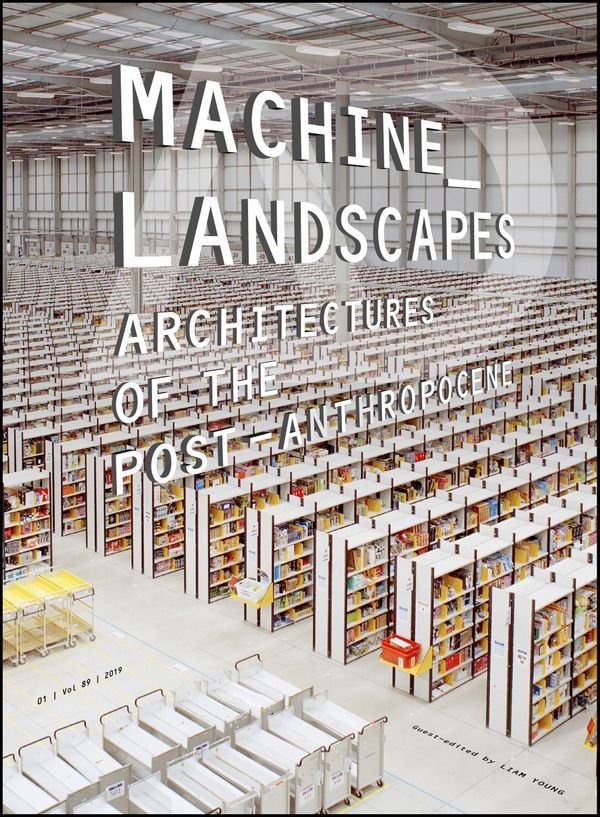Agropoetics Reader (2020)
Filed under book | Tags: · agriculture, anthropocene, art, colonialism, commons, decolonization, ecology, feminism, land, poetics

“The Agropoetics Reader unfolds as a collection of texts that informed, grounded, and nourished Soil Is an Inscribed Body. In this context of reflections and cogitations about the epistemic violence perpetrated by the West against other forms of knowledges, the project examines anti-colonial struggles of past and current land conflicts across the world in order to address the invasiveness of neo-agro-colonialism and its extractivist logics.”
With contributions by Bengi Akbulut, Yemisi Aribisala, Marwa Arsanios, Luis Berríos-Negrón, Filipa César, Marisol de la Cadena, Ayesha Hameed, INLAND, Mijo Miquel, Asuncíon Molinos Gordo, Huying Ng, Maria Ptqk, Maria Puig de la Bellacasa, Silvia Rivera Cusicanqui, Bouba Touré, Mirellle and Jennifer in conversation with Alex Ungprateeb Flynn, Hervé Yamguen, and the editors.
Edited by Elena Agudio, Marleen Boschen, and Lorenzo Sandoval, with Onur Çimen and Cleo Wächter
Publisher Institute for Endotic Research Press, Berlin, with Savvy Contemporary, Berlin, 2020
Open access
ISBN 9783981951264
235 pages
The Plantationocene Series: Plantation Worlds, Past and Present (2019)
Filed under book | Tags: · anthropocene, capitalism, environment, land, plantation, plantationocene, plants, politics

“The Plantationocene is an alternate name for the epoch often called the Anthropocene. Inspired by the scholars and artists visiting University of Wisconsin–Madison as part of the 2019-2020 Plantationocene Sawyer Seminar, this series aims to create a conversation about multiple forms of plantations, both past and present, their materialities, the economic, ecological, and political transformations they wrought, and their significance to the making of human bodies, capitalism, and land over the course of four centuries.”
Contributors: Sophie Sapp Moore, Monique Allewaert, Pablo F. Gómez and Gregg Mitman; Deborah A. Thomas; Raina Martens and Bii Robertson; Leanne Day and Rebecca Hogue; Kwynn Johnson; Donna Haraway and Anna Tsing, a.o.
Edge Effects dossier
Publisher Center for Culture, History, and Environment (CHE), Nelson Institute for Environmental Studies at the University of Wisconsin-Madison, 2019
Creative Commons BY-NC-ND 4.0 International License
Architectural Design, 89(1): Machine Landscapes: Architectures of the Post‐Anthropocene (2019)
Filed under magazine | Tags: · anthropocene, architecture, data center, design, infrastructure, machine, media infrastructure

“This issue of Architectural Design (AD) discusses how the most significant architectural spaces in the world are now entirely empty of people. The data centers, telecommunications networks, distribution warehouses, unmanned ports, and industrialized agriculture that define the very nature of who we are today are at the same time places we can never visit. Instead, they are occupied by server stacks and hard drives, logistics bots and mobile shelving units, autonomous cranes and container ships, robot vacuum cleaners and internet-connected toasters, driverless tractors and taxis.
This issue is an atlas of sites, architectures, and infrastructures that are not built for us, but whose form, materiality, and purpose are configured to anticipate the patterns of machine vision and habitation rather than our own. We are said to be living in a new geological epoch, the Anthropocene, in which humans are the dominant force shaping the planet. This collection of spaces, however, more accurately constitutes an era of the Post-Anthropocene, a period where technology and artificial intelligence now compute, condition, and construct our world. Marking the end of human-centred design, the issue turns its attention to the new typologies of the post-human, architecture without people, and our endless expanse of Machine Landscapes.”
Contributors: Liam Young, Benjamin H. Bratton, Trevor Paglen, Adam Harvey, Jenny Odell, Geoff Manaugh, Ben Roberts, Jesse LeCavalier, John Gerrard, Rem Koolhaas, Ingrid Burrington, Xingzhe Liu, Merve Bedir, Jason Hilgefort, Simone C. Niquille, Tim Maughan, Clare Lyster, Alice Gorman, Ian Cheng, Cathryn Dwyre, Chris Perry, David Salomon, and Kathy Velikov.
Edited by Liam Young
Publisher Wiley, January/February 2019
Open access
ISSN 0003-8504
ISBN 9781119453017
144 pages

